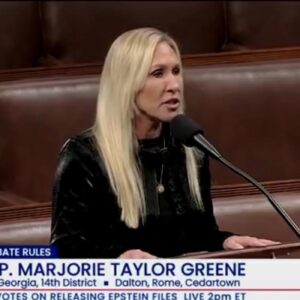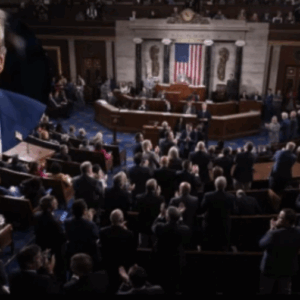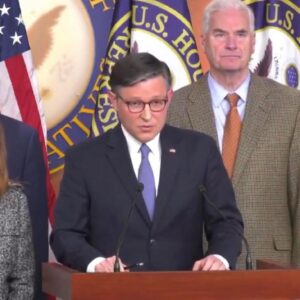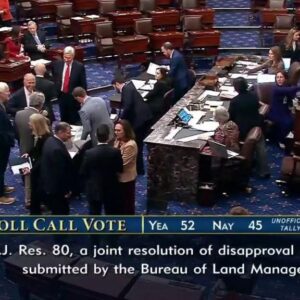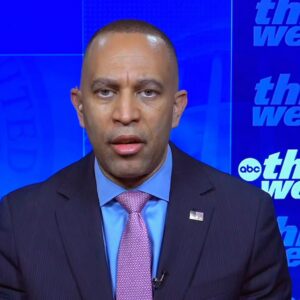Rep. Hakeem Jeffries made headlines this week with a fierce condemnation of former President Donald Trump. His rhetoric focused on the construction of a new White House ballroom, a project that Jeffries claims merits an in-depth investigation and potential legal ramifications for those involved. His outburst seemed to lack substantial evidence, inviting backlash for its aggressive nature.
“These people are gonna be held accountable. No matter how long it takes,” Jeffries declared defiantly. His warning to those he accuses of misusing taxpayer money and endangering the integrity of the White House suggests an urgency that underlines the seriousness of his claims. However, such bold accusations require robust substantiation, which appears conspicuously absent.
Jeffries alleged that the ballroom was linked to “the largest pay-to-play scheme in US history,” implying foul play in soliciting corporate donations from entities with interests in government contracts. He stated emphatically, “All of this is gonna have to be investigated. It WILL. ALL of this will have to be uncovered.” Yet, the veracity of these claims raises questions, particularly in light of the ongoing bipartisan concerns about the federal process surrounding the project.
The ballroom project, which commenced with the demolition of the historic East Wing in October 2019, is part of a larger $250 million renovation initiated during Trump’s administration. Designed to accommodate up to 999 guests, the new facility dwarfs the existing East Room, which can only seat 200.
In support of the renovation, Trump argued that the White House needed a modern venue for significant diplomatic and official gatherings. “It pays total respect to the existing building,” he stated in July 2019. However, discrepancies emerged, as images surfaced showing significant structural damage and alterations that contradicted Trump’s preservation claims. Michael Spencer, an associate professor focused on historic preservation, critiques the project, stating, “That’s not preservation. That’s destruction.”
The method and timing of the demolition sparked additional scrutiny, starting as it did during a federal government shutdown. This led to significant disruptions in the usual approval channels, including the National Capital Planning Commission (NCPC). Will Scharf, an ally of Trump and then-chairman of the NCPC, contended that the commission’s authority did not extend to demolition. Critics, however, argue that proper oversight was sidelined while the project advanced.
The Society of Architectural Historians voiced “great concern” about the project, emphasizing the need for a thorough review process given its historical implications. Similarly, the National Trust for Historic Preservation echoed these sentiments, reinforcing worries over the ballroom’s impact on the White House’s historical integrity.
Controversy swelled further as the White House reportedly sought private donations for the ballroom from various interests, including Comcast, a company with ties to the administration. This raised alarms about ethical breaches and violations of anti-corruption laws. Jeffries leveraged these concerns, suggesting a quid pro quo arrangement involving favorable treatment for those funding the project.
While critiques of Trump’s handling of office resources are not new, Jeffries’ bold assertions falter in the absence of hard evidence. Unlike ongoing inquiries involving Trump, such as the legal challenges related to the FBI’s search of his Mar-a-Lago estate, the claims regarding the ballroom remain speculative at best.
Trump is currently embroiled in separate legal battles, having lodged claims under the Federal Tort Claims Act for hundreds of millions, including $115 million concerning the FBI’s search. He remarked humorously about the paradox of seeking recompense from a government he once commanded, stating, “I’m suing myself.”
Should his claims be granted, the taxpayer-funded Treasury Judgment Fund would foot the bill, raising concerns among Democrats about the potential for misuse of taxpayer resources, with one Representative labeling the situation a “shakedown.”
The political uproar surrounding the ballroom renovation intertwines with broader discussions about ethics and transparency in government dealings. While Jeffries’ combative rhetoric may resonate in political circles, the lack of evidence could undermine his position. On the other side, Trump’s allies maintain that their actions were legitimate and necessary, even as the specter of further investigations hovers overhead.
Ultimately, the ballroom’s construction has altered a historic section of the White House, spurring alarm among preservationists and historians alike. The implications of favoritism in federal contract decisions only deepen the skepticism surrounding governmental processes and potential conflicts of interest.
“The scope and size of the project has always been subject to vary as the process developed,” a White House spokesperson stated back in October 2019. This vague response continues to fuel doubts about transparency.
In a charged political environment, the ballroom project cuts both ways. Jeffries’ remarks may provide fuel for partisan fires, but the absence of evidence could backfire, leaving the accusations afloat without solid ground. Meanwhile, Trump’s team asserts their legality, nestled amid the looming investigations.
